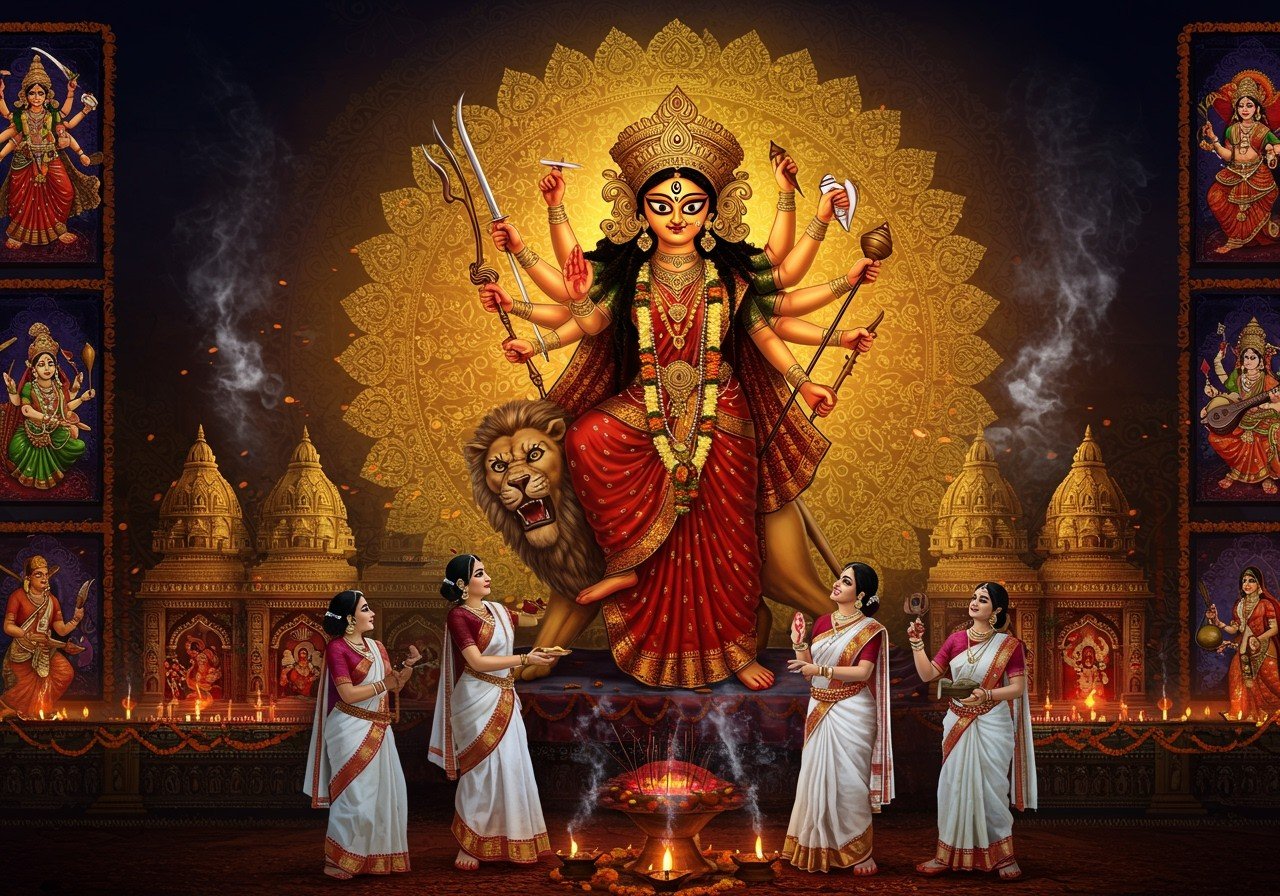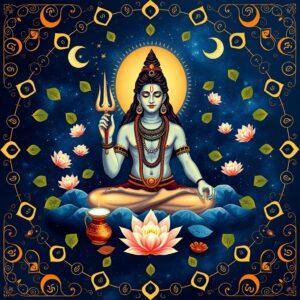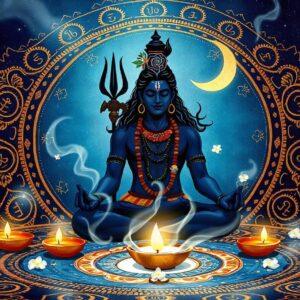
Bengal, a land rich in cultural heritage, boasts a vibrant tapestry of festivals. Among the most prominent are Durga Puja, Kali Puja, and Holi, each carrying unique rituals and deep-rooted significance. This guide delves into the history and celebrations of these festivals, catering to those who cherish tradition and appreciate the ease of online shopping for ritualistic needs. For a convenient and authentic shopping experience for all your puja needs, visit poojn.in, India’s leading online store for cultural goods and services.
Durga Puja: A Celebration of Good Over Evil
Durga Puja, the grandest festival in Bengal, traces its origins back to the late 16th century. Initially a private affair among affluent families (zamindars), it has evolved into a spectacular public event. The festival symbolizes the triumph of Goddess Durga over the demon Mahishasura, representing the eternal victory of good over evil. You can find all the necessary items for your Durga Puja celebrations at poojn.in.
- From Private to Public: The first community Durga Puja (Sarbojanin) took place in Kolkata in 1910, marking a significant shift in the festival’s nature. Key figures like Raja Nabakrishna Deb played instrumental roles in this transformation. This evolution reflects the growing inclusivity and community spirit associated with the festival.
- Artistic Expressions: Durga Puja is a feast for the senses, featuring stunning idol craftsmanship from Kumartuli, elaborately themed pandals, and intricate decorations. These artistic elements add to the festive atmosphere and showcase the creativity of the community.
- Ritualistic Observances: The festival is marked by essential rituals like Mahalaya, Anjali, Sindoor Khela, and the immersion (Visarjan). The preceding nine days of Navratri hold special significance, each dedicated to a different form of the goddess. Poojn.in offers a wide range of products to enhance your Durga Puja rituals.
- Cultural Impact: Durga Puja transcends religious boundaries, fostering community spirit and social cohesion. It is a time for people to come together, regardless of their backgrounds, and celebrate their shared heritage.
Kali Puja: Reverence for the Divine Feminine Power
Kali Puja, dedicated to Goddess Kali, is another major festival celebrated with fervor, particularly in Kolkata. Gaining prominence in the 18th century under the patronage of wealthy Bengali families, it falls on the new moon night of the Kartik month. You can find a selection of items for Kali Puja at poojn.in.
- Mythological Significance: Kali Puja centers around the fierce form of Goddess Kali, the destroyer of evil forces. Her image evokes both fear and reverence, symbolizing the power of feminine energy.
- Historical Context: During the British colonial era, Kali Puja took on a new meaning, symbolizing resistance and empowerment. The goddess became a symbol of strength against oppression.
- Ritualistic Practices: Midnight worship, offerings of meat and wine, and tantric traditions characterize Kali Puja. These rituals reflect the complex and multifaceted nature of the goddess.
- Artistic Manifestations: The creation of Kali idols, decoration of temples and pandals, traditional music, and dance are integral to the celebrations. These artistic expressions add depth and vibrancy to the festival.
- Social Impact: Kali Puja brings communities together through gatherings, fairs, and charitable activities. It fosters a sense of belonging and shared identity.
Holi: A Riot of Colors and Joy
Holi, known as Dol Jatra or Dol Purnima in Bengal, possesses unique cultural nuances. Rooted in ancient traditions associated with Lord Krishna and Radha, it is a celebration of love, joy, and the arrival of spring. Poojn.in offers a variety of colorful items to enhance your Holi celebrations.
- Ancient Roots: Holi’s origins can be traced back to Vaishnavism and the Bhakti movement, emphasizing devotion and love for the divine. These ancient roots give the festival a deep cultural significance.
- Unique Rituals: The procession of idols of Radha and Krishna on ornately decorated palanquins is a distinctive feature of Holi in Bengal. This ritual symbolizes the divine love between the two deities.
- Symbolism of Colors: The vibrant colors of Holi represent unity, joy, and the triumph of good over evil. They also signify the arrival of spring and the renewal of life.
- Musical Traditions: Dol Utsav is enriched with soulful songs by Rabindranath Tagore, adding a touch of poetic beauty to the festivities. The music enhances the celebratory atmosphere and evokes a sense of spiritual joy.
- Cultural Influence: Holi’s influence can be seen in Bengali literature, art, and cinema, reflecting its deep integration into the cultural fabric of the region. The festival has inspired countless artistic creations and continues to be a source of inspiration.
Modern Celebrations and Cultural Significance
While retaining their traditional essence, Durga Puja, Kali Puja, and Holi have adapted to modern times. These festivals now incorporate contemporary elements, reflecting the evolving cultural landscape.
- Technological Integration: The rise of virtual pujas and online shopping for ritual items has made it easier for people to participate in these festivals, regardless of their location. Platforms like poojn.in cater to this growing demand.
- Community Engagement: Local clubs (barowari) play a significant role in organizing large-scale celebrations, fostering community spirit and participation. These community efforts ensure the continuation of these traditions.
Conclusion
Durga Puja, Kali Puja, and Holi are integral to Bengal’s cultural identity. They represent more than just festivals; they are a celebration of history, community, and the triumph of good over evil. As these festivals continue to evolve, they embrace modern elements while preserving their traditional core. They serve as a vibrant reminder of our rich heritage and the values that bind us together.
FAQs
What makes Durga Puja so significant in Bengal? Durga Puja symbolizes the victory of good over evil and fosters community bonding through devotion, music, dance, and shared meals.
How does Kali Puja differ from Durga Puja? Kali Puja, celebrated at night, reveres Goddess Kali, representing power and the destruction of evil, while Durga Puja focuses on Goddess Durga and includes daytime rituals.
What is the historical context of Holi in Bengal? Holi, an ancient festival, marks the arrival of spring and the victory of good over evil, deeply rooted in Vaishnavism and the Bhakti movement.
Looking for authentic puja items and supplies for Durga Puja and other Bengali festivals? Visit poojn.in for a wide selection of high-quality products.


